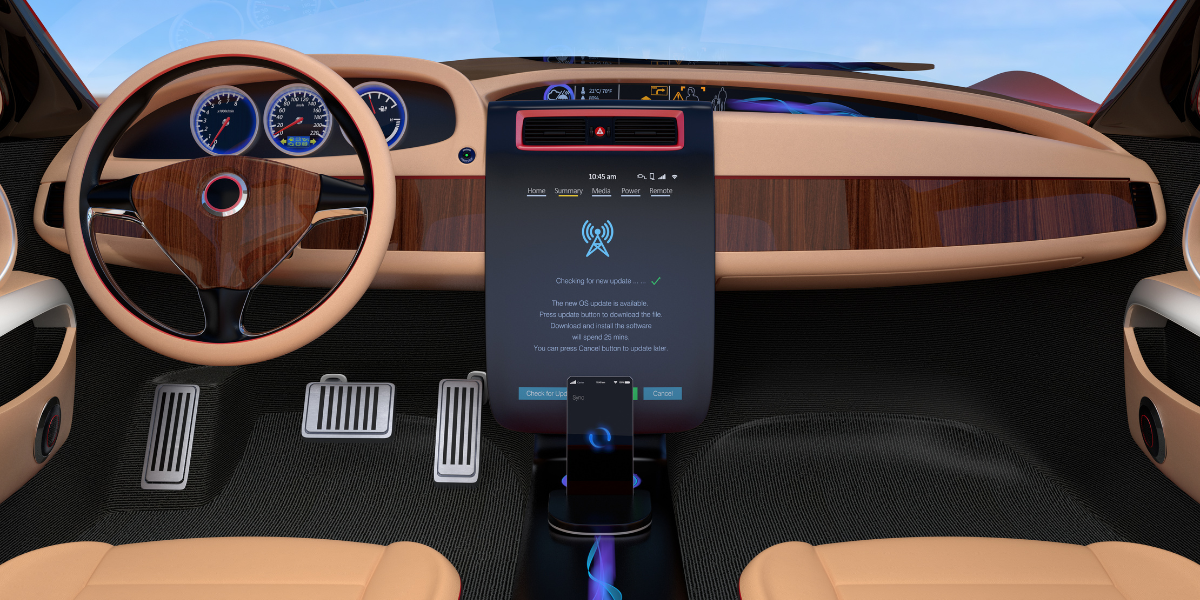Touch screens are rapidly replacing traditional mechanical buttons across all industries. The automotive industry has always been at the forefront of innovation, constantly pushing the boundaries of user interface technology to enhance the driving experience. Nearly all new-model vehicles have replaced some part of their center console with a touch screen.
Drivers have come to expect a seamless user interface experience with these new digital displays given that they interact with a touch screen daily: their smartphone. Stringent tests and regulations, however, affect the center console’s touch screen performance in cars. Automotive manufacturers can offer drivers a sleek, modern user experience elsewhere on the dashboard using innovative capacitive touch technology.
Capacitive Touch Technology
Capacitive touch technology, often found in smartphones and tablets, relies on the electrical properties of the human body to detect touch. Unlike resistive touchscreens, which require pressure to register input, capacitive touchscreens are incredibly responsive to the gentlest of touches. A new standard for capacitive touch technology, called projective capacitive touch or PCAP, allows users to be gloved and still interact with the display. That means we can bring back the stylish trend of driving gloves and still allow users to interact with the control panel.
Benefits of Using Capacitive Touch in Vehicles
Capacitive touch technology can be seamlessly integrated into automotive dashboards and control panels. Nissan, for example, introduced their new dashboard featuring capacitive touch technology two years ago.
- Intuitive Interface: Capacitive touch screens provide a familiar interface for drivers and passengers, as they closely resemble the touch gestures used in everyday devices like smartphones. This familiarity enhances the overall user experience and reduces the learning curve for operating various vehicle functions.
- Sleek and Modern Design: Backlighting and deadfronting can be combined with capacitive touch technology to provide a user interface that is sleek and visually appealing, contributing to the modern and luxurious interior design of vehicles. Deadfronting allows for icons to be hidden until they become backlit. The absence of physical buttons and icons creates a clean and uncluttered look, making the cabin feel more spacious and stylish.
- Customization and Flexibility: Manufacturers can easily customize the layout and appearance of capacitive touch interfaces to suit their specific vehicle models. This flexibility allows for a more tailored and brand-specific user experience.
- Multi-Functionality: Capacitive touch screens are capable of displaying a wide range of information and controls, from infotainment and navigation systems to climate control and vehicle settings.
- Improved Durability: Modern capacitive touch screens are designed to withstand the rigors of daily use, featuring scratch-resistant and shatterproof surfaces. This ensures longevity and reduces maintenance costs for vehicle manufacturers.

Design Considerations for the Automotive Industry
The main concern when adding new technology, especially touch technology, to a user interface is safety. Sometimes touch screens are adopted too quickly to the detriment of users. Will the driver, who should be concentrating on the road, know when they have successfully interacted with a capacitive touch display? Much like your smartphone, a capacitive touch dashboard can provide a tactile sensation upon activation. Haptic feedback, such as vibration, can be added to the capacitive touch display to ensure the best and safest user interface experience.
Stay Ahead of Your Competition
Capacitive touch technology is just one example of how the automotive industry continues to push the boundaries of what is possible, promising a bright future for drivers everywhere. As technology continues to advance, we can expect even more exciting developments in automotive interfaces, further enhancing the way we interact with our vehicles and making our journeys safer and more enjoyable.
If you want to get ahead of your competition, reach out to our team today to learn more about integrating capacitive touch technology and other advanced printed technology in your automotive components.
